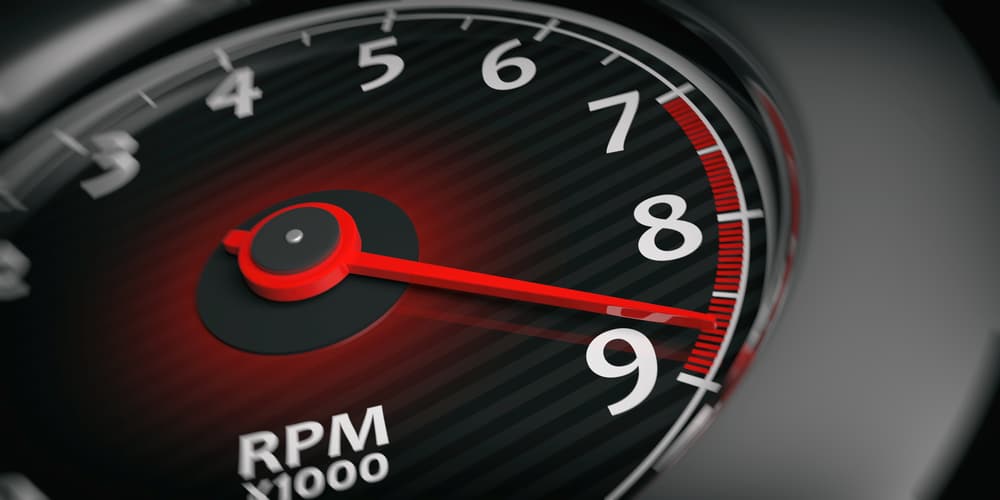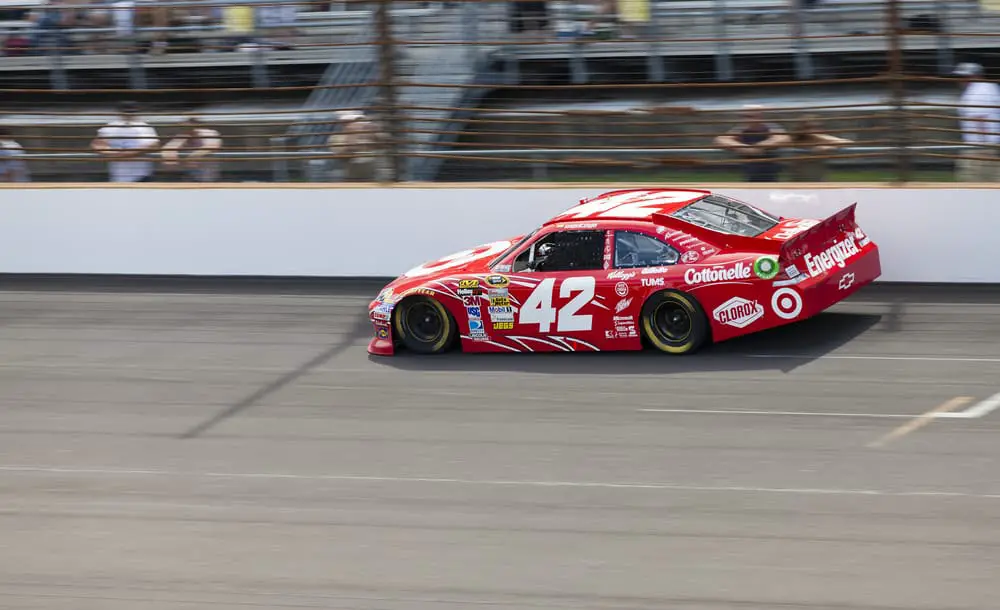NASCAR has been building engines bigger and bigger as the sport has progressed. Through different engine builders’ techniques and engine assembly, NASCAR V8 engines have high horsepower and insane torque.
While the difference between engines of each race team only varies slightly, with no differences in engine size, the engine bay of a NASCAR vehicle is far removed from the street car is based on.
Key Points:
- NASCAR V8 engines are more powerful than the average street car and have a higher RPM range.
- The peak horsepower of cars is regulated from 670 to 510 on different tracks, with the highest RPM attainable being 10,000.
- Engines are cooled using special race car coolant instead of anti-freeze and through vents, grills, and airflow assemblies.
Whether idling, revving, or actively racing NASCAR engines, the piston speeds and revolutions per minute are way higher than the street cars they are based on. To achieve maximum horsepower and the highest revoluting engine in terms of torque and speed, engine designers do every they can to keep the engine speed up and engine damage down.
Read on to find out the RPM NASCAR engines run at.
What is the RPM Range of a NASCAR Engine?
To understand the power of a NASCAR engine, it is good to look at the range of speeds the engines run at. When sitting with the transmission idling to warm the engine up to an optimal temperature, the idling RPM of 2500 is a common speed. This means the idling speed of these motors is about 2 to 4 times faster than the average street car, which prevents the massive engine from stalling.
When shifting between gears and actively racing, the engine will run at between 8500 and 9500 RPM. At these speeds, engines generate tremendous power, burn tons of fuel, and use air and water to keep the unit from overheating and exploding. With high rpm comes more horsepower and greater temperature increases which reduce drag and receive an engine coolant.
In pits or at the start of a race, cars can rev over 10,000 RPM and generate more horsepower contributing to the greatest maximum speed. Since the engine components heat up a lot in these conditions, an air and water cooling system was developed to ease engine durability concerns.
Overall, the RPM and subsequent power generated in NASCAR engines are much greater than the nationwide engines in road cars.
How High Can NASCAR Engines Rev?
The engine RPM a race car is able to generate is generally different from what the engine spins at on the track. Most NASCAR vehicles have a faster engine than it appears, but because of the sport’s regulations, the high-revving engine cylinder is restricted. If unrestricted, the actual horsepower of cars can be greater than 700 with an RPM of 10,000 when revving high.
Unrestricted, most cars reach between 8500 to 9000 RPM with their powerful internal combustion engines. The All-Star Cup series race and other NASCAR races have restrictions on the peak horsepower allowed by race car teams. In the past, reduced horsepower and subsequent power loss were accomplished with restricted plates that restricted airflow into the engine.
Now, tapered spaces restrict the horsepower of cars to 670 on most tracks. The reduced power output is designed to keep cars running at approximately 200 MPH, which is the highest speed a stock car can run out that doesn’t increase the chance of flying off the track in the event of a collision. The longer the straightaway and higher the possible max speed, the more the car’s peak power is restricted.
On road course events, Ponoco Raceway and Martinsville Speedway NASCAR engines average 9400 RPM, whereas, on other tracks with slower track conditions, the RPM is closer to 9,200 to 9,400. Racers’ engines are capped further to 510 max HP on Talladega and Daytona superspeed ways. To avoid confusion, a different engine is made for each track to meet all regulations.
NASCAR Engine Heat and Cooling
One of the interesting insights into race car mechanics is the cooling of the supercharged V8 engines NASCAR uses. These engines get very hot and run for a long time, and need additional cooling. Typical engine coolants common in a standard road car engine that contain anti-freeze are not used in NASCAR due to track hazards if any is spilled during a race.
The other common way to cool cars is through the grills and vents. NASCAR does use an airflow-limited engine cooling system that helps not only keep the motor running at the optimal temperature but also reduces drag on the car. The elevated engine temperatures require water to cool down and different types of cooling at varying engine temperatures.
| Engine Task | Temperature | Cooling System |
| Idling | 170 to 220 degrees F (75-105 C) | None |
| Driving | 290 degrees F (143 C) | Water enters the engine under a psi of 75 to naturally raise the boiling point of water to 300 degrees |
| Revving | 230 to 240 degrees F (110 – 125 C) | Limited Airflow Cooling System |
What Decibels Do NASCAR Engines Reach?
The thrum and roar of the cars as they whip past on the track is one of the main draws for trackside spectators. The loud engines are possibly even dangerous when exposed to them for the entirety of the race. All drivers and racers use foam earplugs and headsets to reduce the damage done while still allowing them to enjoy the race sounds. Fans are advised to do the same.
The level of sound at a NASCAR event is around 100 decibels, with 130 being the highest achievable at full rev in pit stops. This level of sound is similar to a jet flyover for 3+ hours or a garbage truck parade. While other sounds like chainsaws and mowers reach similar levels, we often don’t hear as many running t once or for as long, making NASCAR races very noisy events.
The noise represents the maximum torque the large V8 engines can provide, which translates into fast racing speeds. To increase the total horsepower available temporarily, high revving speeds can be reached, but eventually, the cooling of the engine and other internal factors will bring the vehicle back down to normal operating speeds.
The loud sounds are further compounded by the fact that NASCAR vehicles have no mufflers. These generally allow the hot air pumped out of the engine to cool down and be quiet before discharging. Without that, the superheated air is released as is. To bring in the fresh air, the engines are naturally aspirated. Sucking air into the engine at such a high rate of speed creates its own intense sound and a louder VRRMM!
As far as race cars go, NASCARs have some of the loudest engines in terms of decibels when compared to Indycar and Formula 1. The vehicles are much louder than street engines since they are not designed to drive in residential areas where noise compliance exists.
The boreholes that are made by engine builders to reduce the weight of the engine while adhering to the set cubic inches required also increase the pathways by which the loud engine sounds can escape. NASCAR engines are loud, especially when they are running at over 9000 RPM.



